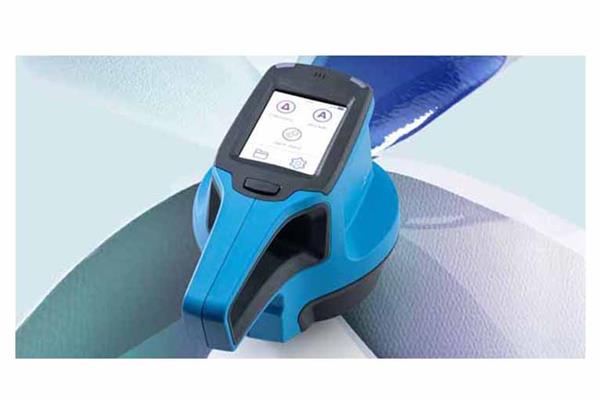
The new spectro2profiler represents a major step forward for the industry because currently, the only way to check the quality of structured surface is a visual inspection. The new tool measures colour, gloss and analyses the 3D topography of the surface texture.
Colour analysis is not enough
Uniform appearance is a crucial quality criterion for many products. The choice of material and production process variation influence the surface quality - cell size of powder coatings can be highly dependent on film thickness and curing conditions, whilst gloss and contrast variations in injection moulding applications can be due to fluctuations in tool pressure and temperature. With the change of just one material or process parameter, the visual perception of Colour and appearance can change significantly. Recent development of colour and gloss meters significantly improved quality control, but do not include the effects of structure or complex gloss behaviour of 3D-surfaces. Detailed information of the surface structure can be obtained using 3D microscopes in the laboratory for research purposes but are not suitable for fast and easy analysis of production quality.
spectro2profiler objectively analyses structures with different algorithms: Leather-like - Coarse Paint - Fine Texture
Using photometric stereo technique an object is observed from four different illumination directions. With each direction, the object casts different shadows on the surface and a camera acquires images for each illumination. Using shape from shading, the surface curvature is estimated, and the height map of the object can be calculated. The result is a real 3D topography of the object surface with cell size and perceived cell amplitude measurement.
spectro2profiler objectively measures contrast: Key QC criteria for mould quality
Spatially resolved 2D reflectivity measurement with camera-based technology is combined with the 3D topography measurement data to separate the reflection of hills and valleys.
Conclusion
spectro2profiler marks a turning point - the combination of colour, gloss, 3D topography and 2D reflectivity in one easy to use instrument - a milestone in the objective measurement of textured surfaces. The spectro2profiler incorporates three algorithms for surface structure analysis - leather-like structures, coarse paint, and fine paint or plastic textures. Providing excellent technical performance, repeatability and inter-instrument agreement, digital standards can be used as a reference, allowing a flawless communication within a global supply chain, on the production line as well as in the laboratory.